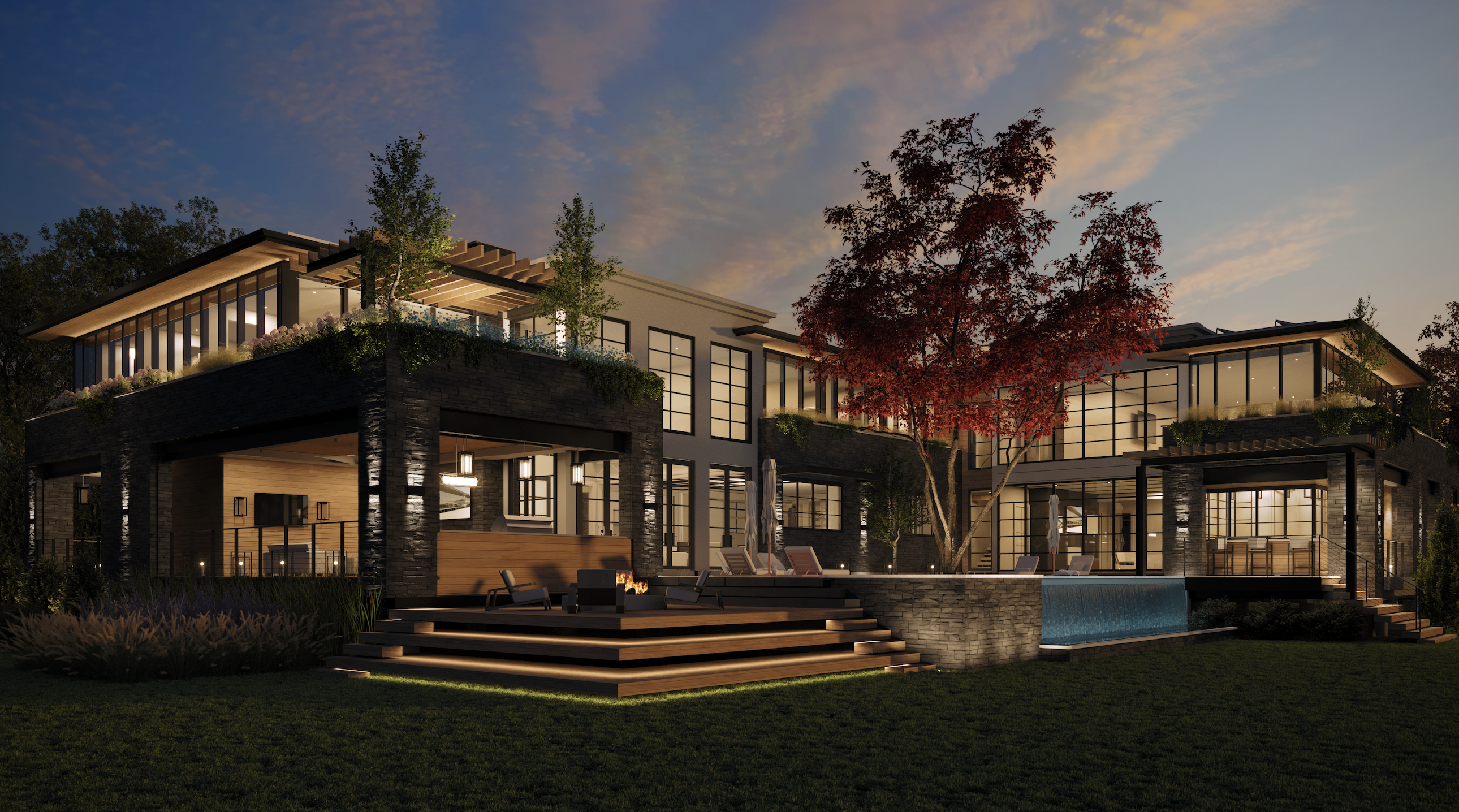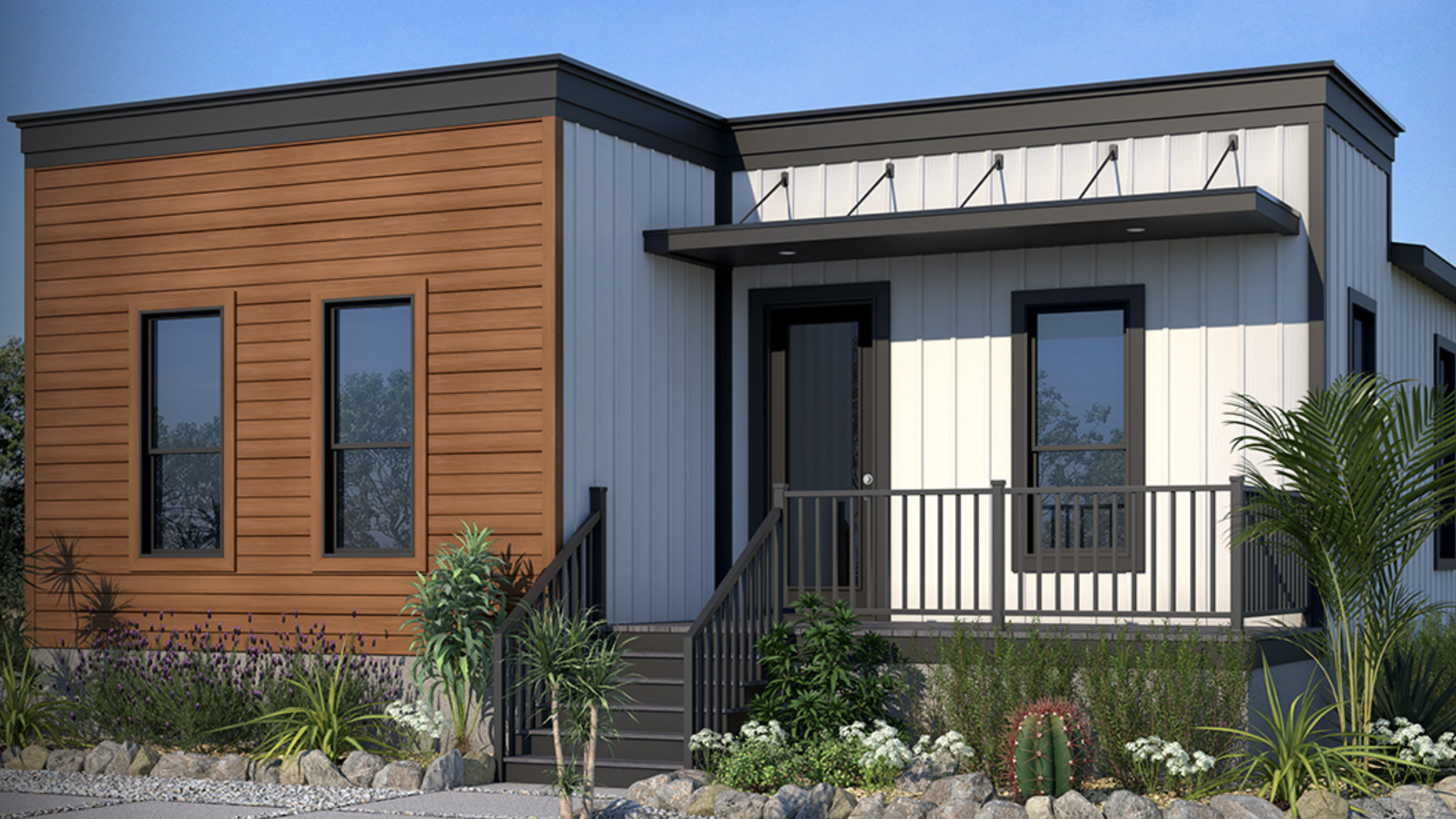| With structured wiring, a single outlet can accomodate phone, cable television and broadband Internet service.
Structured media enclosures, such as the Leviton Integrated System's 140A, create one accessible consolidation point for voice, data, audio, and video services provided through structured wiring. |
Where new-home technology ventures, existing-home technology often follows. According to a study by the Consumer Electronics Association and the NAHB Research Center, more than 42 percent of new homes built in 2002 included structured wiring, making it the most widely incorporated technology in new homes.
And why not? Structured wiring, which incorporates RG6 cabling and Category 5 wire, is the most effective electronic foundation to support high-speed voice, video and data connections. For homeowners desiring a comprehensive home automation system, with a single PC coordinating HVAC, lighting, communications, entertainment, and security systems, structured wiring may be a necessity.
Yet that same study found that less than 5 percent of existing households had structured wiring systems, so there is an untapped market of more than 110 million existing homes. Because structured wiring can increase a house's value, it's an upgrade a growing number of homeowners will consider. Remodelers who can educate homeowners about structured wiring and the functionality it offers stand to increase current sales and plant the idea for additional projects down the road. And it's not just for customers planning a whole-house remodel, either.
"It really depends on what they want to do. In a remodel, structured wiring's main purpose is entertainment and communication. So it's not always necessary to do a whole house, which would be a major undertaking in a retrofit," says Mark Cerasuolo, director of brand development for Leviton Integrated Networks in Bothell, Wash.
Structured wiring distributes a variety of data signals to electronics in the home, such as cable television, telephones and Ethernet computer networks. A structured wiring system is designed with "home run" cables from each room in the house back to a central distribution box.
Structured wiring typically uses RG6 cabling for video signals rather than the prior standard of RJ59, which cannot transfer digital images. For voice and data transfer, the system uses Category 5 wire, which is four pairs of twisted, unshielded, solid copper. Category 5 wiring allows much faster data transfer rates — equal to bandwidth — than telephone systems.
In 2002, the Federal Communication Commission began requiring new wiring installations and modifications to use a minimum of Category 3 wire for voice and data transfer. Category 3 wire is similar to Category 5, except it has two pairs of wire instead of four, resulting in less bandwidth.
With greater bandwidth, Category 5 wire is more expensive, costing approximately $65 per 1,000 feet, compared to about $40 per 1,000 feet for Category 3 wire, and about $25 per 1,000 feet for standard phone wire. The total installed cost of a structured wiring system depends on the size of the home, the number of desired technologies, and the number and types of devices connecting the whole-house system to each technology.
Besides the improved networking capabilities, Category 5 wiring can also become the basis for extensive home automation systems, including security systems, energy use controls and more.
Retrofitting structured wiring is not always an easy process, depending on the home and what the homeowner wants the system to do. If you're just adding dedicated communication and data cable lines, a whole-house structured wiring system may not be necessary, says Cerasuolo. Many of the functions of a home automation system can use the power lines already in the home, or be improved through wireless technology. Structured wiring comes into play when there is a greater demand by homeowners for entertainment, which is often only necessary in a few rooms in the house.
"What I think you will see more of is retrofitting in one or two rooms with structured wires where there might be a need for dedicated lines, like maybe an office or a kitchen," Cerasuolo says.
Jay McClellan, president of Home Automation Inc., a developer of integrated security and automation systems in New Orleans, advises remodelers to fully understand the consumer's needs before beginning an installation. For those who want all of their electronics to interface with the Internet, he says a structured wiring foundation is the way to go.
Ironically, it may be easier in homes built before 1950 (depending on the region), which often have cavities behind the floors, ceilings and walls. This means drilling fewer holes during installation.
In newer homes with concrete floor slabs, minimal space within wall cavities, and more complex designs, installation requires removing wall linings. That means a bigger mess and additional cost.
Sometimes you can run wiring along floors and walls behind hollow moldings, but Cerasulo cautions that this option is a better choice for telephone and other low-rated wires than for structured wiring. Local codes may not allow hollow raceways/moldings. You must also consider fire hazard ratings. Lastly, highly rated cable — Cat 5 and 5e — will not work appropriately if it bends dramatically (like around corners) or if the cable is pinched by molding that is too small in areas.
The easiest time to install structured wiring is when a bigger remodeling job requiring new power wiring is already in the works. McClellan reports that installing a fairly basic system that covers windows, doors, and lights is pretty simple. In these cases, "installing a structured wiring system is no more difficult than putting in an alarm system, which is a common retrofit in existing homes," McClellan says.
For more information, visit www.toolbase.org.
Related Stories
Custom Builder
HUD Secretary Marcia Fudge Announces Forthcoming Resignation
U.S. Department of Housing and Urban Development Secretary Marcia Fudge has said that she intends to leave office later this month
Custom Builder
Floodproof on a Floodplain
An impressive addition to the IDEA Home series, the NEWLOOK Experience Home is a master class in engineering and creative design, with builder Michael Freiburger out-thinking an exceptionally tricky lot
Custom Builder
Why Start a Custom Building Business?
In this Taking Care of Business segment, expert coach and trainer Scott Beebe joins our host Duane Johns to talk about where custom builders could be getting off on the wrong foot
Custom Builder
3 Questions Answered About Reliable Energy in Home Construction
Energy expert Bryan Cordill makes a case for why and how propane is an answer to growing concerns about reliability and resilience in home construction
Business
Custom Builder to Talk Color Design with Becki Owens at IBS
At this year's IBS, renowned designer Becki Owens will sit down with host James McClister, editor of Custom Builder, to discuss a variety of topics from basic color play in design to the Allura Spectrum palette, a collection of Sherwin-Williams colors curated for the benefit of pros
Business
PERC Highlights Sustainability and Efficiency at IBS with 'Clean Build Conversations'
Hear from industry standouts Matt Blashaw and Anthony Carrino at this hour-long Show Village event
Business
The Five Foundational Cornerstones
Business coach Scott Beebe shares insights into the often ignored business basics that could be the difference between long-term success and failure
Custom Builder
Start With the Why: Fundamentals of the Custom Builder Business
In our inaugural episode of Taking Care of Business, host and custom builder Duane Johns sits down with Scott Beebe, head coach and founder of My Business on Purpose, to talk vision, purpose, mission, values, and more
Business
Why AI Is Now Key to Our Trade Partner Strategy
Thompson Custom Homes Business Manager Erin Day explains how AI became a crucial part of building and maintaining successful trade partner relationships
Business
Thriving in 2024: Tips for Succeeding in an Uncertain Environment
Author and sales expert Mark Richardson shares his insights on the industry and how to rethink your approach to success in the new year












